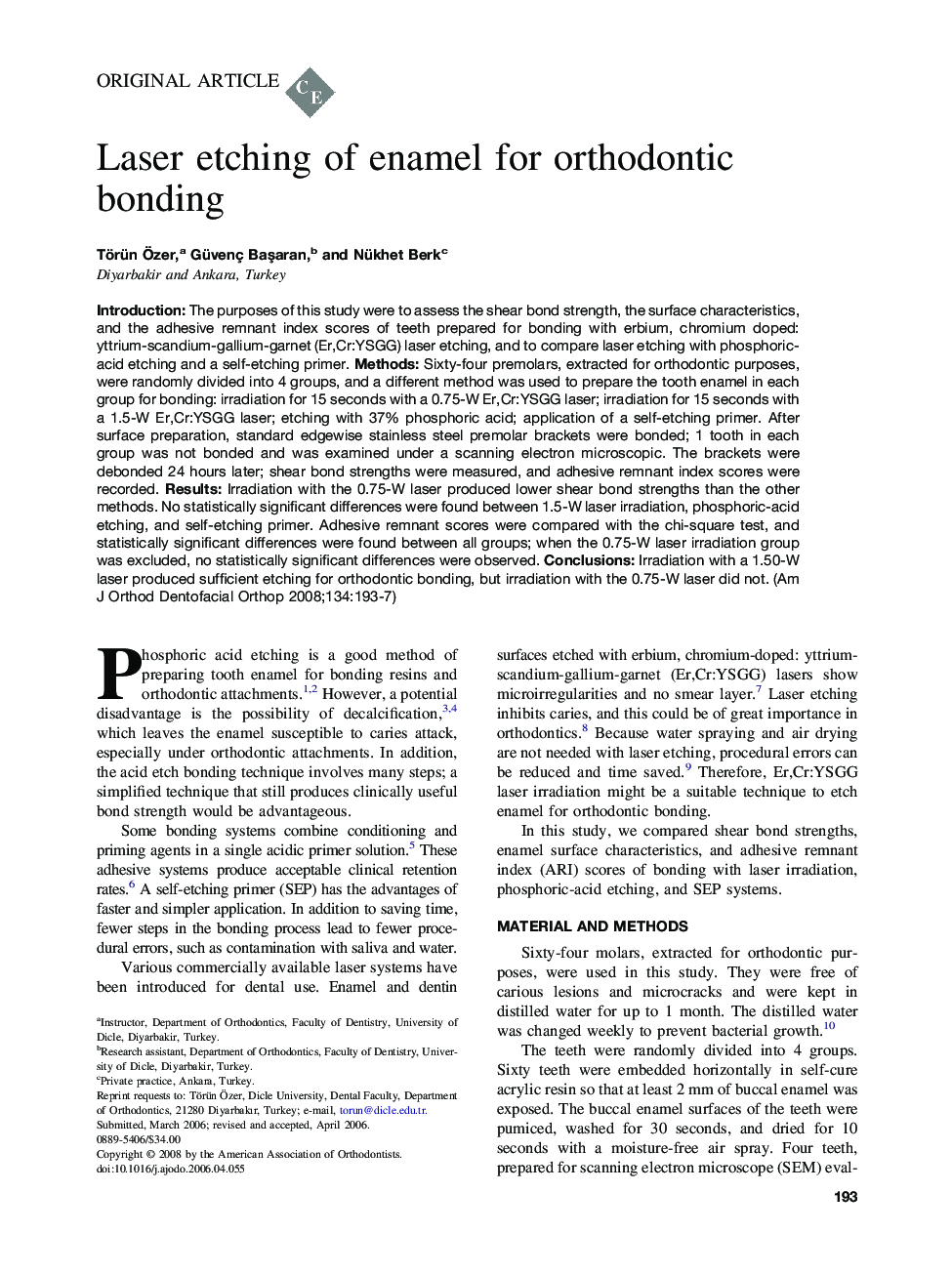| Article ID | Journal | Published Year | Pages | File Type |
|---|---|---|---|---|
| 3118526 | American Journal of Orthodontics and Dentofacial Orthopedics | 2008 | 5 Pages |
Introduction: The purposes of this study were to assess the shear bond strength, the surface characteristics, and the adhesive remnant index scores of teeth prepared for bonding with erbium, chromium doped: yttrium-scandium-gallium-garnet (Er,Cr:YSGG) laser etching, and to compare laser etching with phosphoric-acid etching and a self-etching primer. Methods: Sixty-four premolars, extracted for orthodontic purposes, were randomly divided into 4 groups, and a different method was used to prepare the tooth enamel in each group for bonding: irradiation for 15 seconds with a 0.75-W Er,Cr:YSGG laser; irradiation for 15 seconds with a 1.5-W Er,Cr:YSGG laser; etching with 37% phosphoric acid; application of a self-etching primer. After surface preparation, standard edgewise stainless steel premolar brackets were bonded; 1 tooth in each group was not bonded and was examined under a scanning electron microscopic. The brackets were debonded 24 hours later; shear bond strengths were measured, and adhesive remnant index scores were recorded. Results: Irradiation with the 0.75-W laser produced lower shear bond strengths than the other methods. No statistically significant differences were found between 1.5-W laser irradiation, phosphoric-acid etching, and self-etching primer. Adhesive remnant scores were compared with the chi-square test, and statistically significant differences were found between all groups; when the 0.75-W laser irradiation group was excluded, no statistically significant differences were observed. Conclusions: Irradiation with a 1.50-W laser produced sufficient etching for orthodontic bonding, but irradiation with the 0.75-W laser did not.
